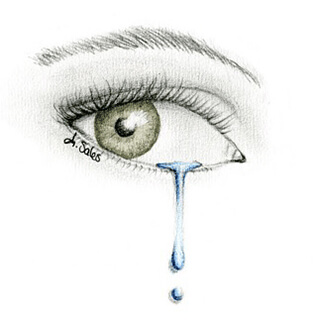Tearing is a very common problem in the population, and although it is not serious, it is very annoying. Apart from the discomfort of having to dry your eyes with a handkerchief, which can hinder many social activities, continuous tearing often causes irritation of the skin where the tears fall, generally caused by continuous drying. It can also partially impair vision, since normal vision requires a homogeneous tear. When there is an excess of tears in the eye, there is an alteration in vision, which is usually very variable, and typically affects reading more.
Tearing is an annoying and very common problem that almost always has a solution, which is why it is very important to have it assessed by a specialist who can offer the most appropriate solution.
Why can the eye cry?
The production and elimination of tears in the eye is similar to a sink. The eye may cry because of excess tear production (too much water coming out of the tap) or because the tear that is produced is not eliminated properly (having some alteration that makes it difficult for the water to reach the pipes or blocked pipes).




